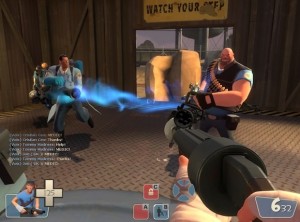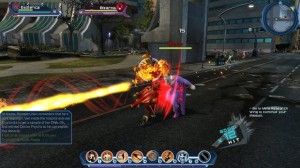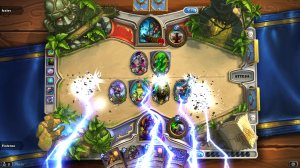Early Perceptions
Back in the dark ages of the early 2010’s, when mobile games were gaining popularity, developers needed a way to ensure that fans were consistently playing their products. Teams rushed content out at a low price to guarantee their game would be included in the coveted “Top Downloads” list. Prices started at ten dollars, dropped quickly to 99 cents, and then came the dirtiest phrase in gaming culture, “Free to Play” (F2P). Instead of forcing customers to pay for a product, developers created a “first hit’s free” system whereby they would encourage gamers to continually funnel cash into their coffers via in-app-purchases. Developers were happy, ‘casual’ players were gaming, and the hardcore gamers looked down on it all in disgust.
The mere mention of F2P made avid players angry, local news shared horror stories about in-app purchases leading to $1,400 phone bills, and it was touted as fact that the entire F2P model would destroy gaming society. Like any new product, there were stumbling blocks and missteps, by both developers and consumers. Hop into the DeLorean, travel to 2014 and F2P games are not only thriving, but fully embraced by all levels of the gaming community.
Planetside 2, DotA 2, League of Legends, Team Fortress 2, Hearthstone, Star Wars: Knights of the Old Republic, Age of Conan and a  plethora of other F2P games are quality titles in anyone’s game library and don’t require a single penny. They each have avenues for players to donate coin in exchange for in-game perks, but there is no evil mechanism requiring gamers to do so.
plethora of other F2P games are quality titles in anyone’s game library and don’t require a single penny. They each have avenues for players to donate coin in exchange for in-game perks, but there is no evil mechanism requiring gamers to do so.
What changed between the dawn of F2P and today? Here are a few examples that represent the best in their class for Freemium enhancements.
Cosmetic Upgrades
Close your eyes and imagine….(well, open them so you can continue reading), a shooter with a robust community, competitive tournaments, balance updates and continual growth of users year over year. If you were thinking of Call of Duty, you could be correct, but another acceptable response is Team Fortress 2. The distinct difference between these two? TF2 is completely free. The only revenue stream for TF2 is through the purchase of cosmetic upgrades for characters, such as hats.
Valve, the developer behind TF2, encourages players to be part of the design community, upload their creations and allow other gamers to purchase the user-generated content. These stylistic upgrades have no bearing on the character balance, respawn time or damage output while in combat. The game’s core mechanics, cartoon charm and addictive gameplay remain unaltered. Valve even provides players a cut of the proceeds from any of their designs that are purchased, allowing this F2P to become a “Paid to Play” experience for a skilled designer.
By creating a well-balanced shooter where players cannot gain an unfair advantage through in-app purchases, TF2 is able to remove the stigma associated with F2P and gain popularity with an audience by letting them try the product with no upfront cost.
Gated Sidequests
Outside of the runaway success of World of Warcraft (which is F2P up-to level 20), MMORPG developers have struggled to create another sustainable entry in the genre. With the advent of F2P, games on the brink of server shutdowns are provided a new lease on  life. The switch from subscriptions to F2P results in an infusion of new players, a robust online community, and gamers who enjoy the game enough to throw a couple dollars at it. But you can play many of these entries and become a high level champion without paying.
life. The switch from subscriptions to F2P results in an infusion of new players, a robust online community, and gamers who enjoy the game enough to throw a couple dollars at it. But you can play many of these entries and become a high level champion without paying.
DC Universe Online is the only successful F2P MMORPG for consoles and an excellent game in its own right. Players build a customizable character, travel Metropolis, fight alongside Batman, go on raids, complete daily quests and earn in-game dollars with no cash required. Players have to pay if they want any of the game’s additional content, which serves more as DLC than required playing. The top-tiered gear can be obtained through in-game currency by completing quests and cannot be purchased with cash. All players can join clans, interact with event bosses and partake in the game’s marquee moments. The in-game world makes no distinction between players who purchased goods and those who play for free.
There are a few perks that DC Universe Online offers, to sweeten the deal for those who paid for a $10 DLC pack, such as upgrading character slots from 2 to 6 (but you will realistically only focus on one character), an expanded wallet (which is not required to purchase the game’s gear or be a competent fighter) and preferential treatment in the log-on queue (which is only noticeable during peak hours). The distinctions are minimal, leaving only players who truly want the extra content to commit to purchasing.
Unlockables
Mass Effect 3, Ryse, Forza 5 and other full retail games have components where players can either earn in-game currency to unlock additional items or buy these with real dollars. This is a revenue generating strategy that big publishers learned from the success of F2P games, but they missed the critical difference of no upfront cost required in their F2P counterparts.
Hearthstone, an easy to pick up and addictive collectible card game, is centered on gamers building a deck of cards and battling other players. There is no ‘master deck’ or ‘I win’ card, unlike the (understandably hated) Pay to Win games which dominated early F2P offerings. This entry requires no capital from players. By completing daily tasks or winning three rounds, players earn gold to purchase booster packs. If players desperately want a new booster pack, but don’t have enough gold, they can purchase packs with  real coin. Each pack contains a random selection of five cards, with no preferential treatment for those who pay dollars for packs versus gold. Even if a player purchases 100 booster packs, they can still be bested by a player with only the starting cards, based upon skill and the luck of the draw.
real coin. Each pack contains a random selection of five cards, with no preferential treatment for those who pay dollars for packs versus gold. Even if a player purchases 100 booster packs, they can still be bested by a player with only the starting cards, based upon skill and the luck of the draw.
Modern Analysis
There are terrible, horrible games which bait players with a ‘free’ label and then gouge them with microtransactions. Candy Crush’s most difficult levels require power-ups which require cash. Clash of Clans is okay in short spurts, but if you want that Wizard Tower to be finished immediately instead of taking three days, be prepared for a hefty bill. These entries will continue to flood the market and be prevalent as long as players are willing to pay developers their bribe money. 90% of app store revenue comes from in-app-purchases; I read it on the Internet so it must be true. But thankfully, these are not the only F2P games on the market.
There are great RPG games and there are bad entries in the category. There are shovelware platformers that follow in the wake of an excellent game’s success, and games that are released annually then run into the ground until they can’t turn a profit anymore. We never condemn the entire genre associated with these bad performers, and the same dispersions shouldn’t be cast on F2P.
Free to Play is not evil. When done correctly, developers are providing players with hundreds of hours of entertainment at literally no cost. Download a F2P game that you’ve heard good things about, or even mediocre things, and give it a shot. You might find a hidden gem or even your next favorite game. And the best part? It won’t cost you a thing.
Level Up, Friends!
